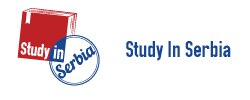Study In Serbia
Secondary education
Upper secondary schooling consists of four years of general education or two to four years of vocational education.
Grammar schools
General secondary education is acquired at grammar schools. There are two types of grammar schools: grammar schools of general type and specialized ones. Grammar schools of general type may organize four programmes: general, socio-linguistic, natural sciences and IT.
Specialized grammar schools are intended for education of talented students in certain areas. There are mathematical , philological , sports and computer science grammar schools. Grammar schools of general type also organize classes of students who show talent in special areas: mathematics, physics, languages or sports. Some regular grammar schools have bilingual classes, where a number of subjects are taught in foreign languages: French, Italian or English.
At the end of four-year grammar school education there is a graduation exam and as of the school year 2014/2015 there will be a general external matura.
Secondary vocational and artistic education
Secondary vocational education is acquired at vocational schools that prepare students for work in 15 areas (agriculture, forestry, geology, mechanical engineering, electrical engineering, graphic industry, textile, construction, transport, hydrometeorology, commerce, economics, health, art, personal services).
Students at vocational schools acquire and develop general and vocational knowledge and skills for further education or work. At these schools, the duration of education is not uniform: there is education and vocational training that lasts for up to one year, work education for two years, secondary three-year and four-year education, specialist and master's education (after two years) for a period of one to two years. Vocational schools also organize retraining and additional training programmes.
At least 40% of general and 55% of vocational content is represented in the four-year programmes, whereas the respective figures in the three-year programme are 30% and 65%. Practical teaching is conducted in school workshops and in the workplace. The final exam is taken at the end of a three-year educational programme, and the school-leaving exam is taken after a four year educational programme.
Secondary arts education takes four years and is realized in music, ballet and visual art schools in the area of culture, art and public information. Arts matriculation is taken upon completion of secondary arts education.
Secondary music schools educate the following profiles: music artist (vocal and instrumental, jazz department, department of early music, department of church music), musical associate (theoretical, department of ethnomusicology) and sound designer.
In secondary ballet schools, education is provided in the following departments: classical ballet, modern dance and folk dance. Schools of visual arts educate the following profiles: art technician, curator, designer and artistic handicrafts.
Secondary adult education
Secondary schools can offer a special curriculum for adult education, vocational training programme, and training. Other associations or individuals can implement special programmes in the areas of adult education if they meet prescribed standards for the implementation of special programmes and receive approval from the Ministry.
Regional training centres for adults are leading regional institutions for vocational education, training and adult training, managing over 40 training programmes, accredited by the Ministry of Education, Science and Technological Development, and also acknowledged by the National Employment Service.



